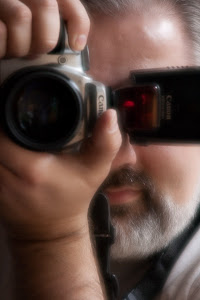Explanatory note:
One of the earlier comments to the post read: "This entire post can be reduced to "I didn't get the memo that Communism failed." There's no hyper-left blogosphere in America because there's no hyper-left in America, as you so keenly observed in noting that we alone in the west lack a serious socialist party. What you have failed to observe in tandem is that there is a very good reason for that." The response by the original poster was, "I am not a Communist."
Now, my comment:
I find your tossaway answer above to the "didn't get the memo" comment intriguing. You're not a Communist. Fine. If you don't mind a little advice from the Loyal Opposition, here's a suggestion:
Communism was the bogey of American politics, except for Marxist campus types, for decades. The world's largest Communist power had nuclear missiles pointed at all our heads, fought us in proxy wars that killed tens of thousands of Americans, and said it would bury us all in the name of the People while its actual, non-capitalized people lived in obvious squalor (compared to Americans) which was denied laughably. Eventually, it collapsed utterly and caused even more chaos. Americans don't like the word Communist. They don't like being threatened (nobody does,) they don't like being told they're evil (ditto) and they don't like a loser, and Communism is the biggest loser most Americans can think of since the Confederate States.
They don't like the idea of Communism, is what I'm trying to say here. And then here you come, saying, "Oh, no, I'm not a Communist, I'm a $WHATEVER," but saying basically the same things American Communist apologists spouted the whole time all this was going on.
Don't point me at Wikipedia. Don't tell me to read some dense tome. Tell me in a hundred words or less why you're not a Communist, what the difference between you and Communists is, and why we wouldn't end up where the Communists did if you were in charge instead of the murderous leaders they started out with or the bureaucraticly inept apathetic tyrants they ended up with. That's your job. That's your burden, that's your cross. Drop her, Jack, and all be lost.
But do it, and somebody, somewhere, over the age of twenty-five who's ever had to work for a living may actually listen to what you say. I won't, because I think that you are an agent of the Adversary. But somebody might. Probably more people than would ever listen to me, because parts of what you say are much more appealing than anything I have to offer. Fail, and the right-wing sleazeballs will continue to rule populist opinion and you will stay right where you are.
And if you challenge any of my assertions about historical Communism above, you've lost already. They lost. Demonstrably. Provably. Utterly. And what I said is the common understanding of How The S**t Went Down. You will NOT change it. Ever. Defending it only brands you with the Loser Brand. You can only make progress if you make yourself distinct from it. If you can't do that, you lose.


